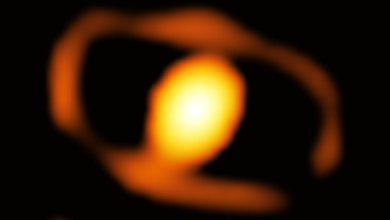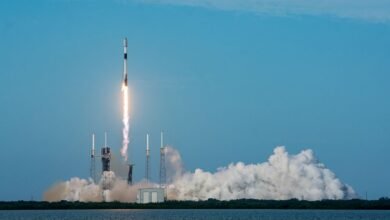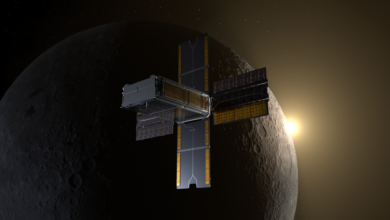Asteroid pieces brought to Earth help reveal how our solar system’s planets and moons grew

Samples collected from the near-Earth asteroid Ryugu have revealed clues about a primordial magnetic field that helped asteroids, planets and moons grow in our solar system.
Analysis of three grains returned to Earth by Japan’s Hayabusa2 mission in 2020 showed evidence of an ancient magnetic field preserved in the asteroid’s geological record, a new study reports.
“This nebular field disappeared around three to four million years after the solar system‘s formation, and we are fascinated with how it played a role in early planetary formation,” lead author Elias Mansbach, a postdoctoral researcher at the University of Cambridge in England, said in a statement. “But how far this magnetic field extended, and what role it played in more distal regions, is still uncertain, because there haven’t been many samples that could tell us about the outer solar system.”
Astronomers think that Ryugu formed in the solar system’s outer reaches nearly four billion years ago and then moved closer to the sun, eventually settling into its present orbit between Earth and Mars. This means the asteroid has been relatively untouched by processes that alter or erase geological and magnetic records, such as intense heat or collisions, hypothetically preserving any ancient magnetic signatures.
Related: Hayabusa2: Japan’s 2nd asteroid-sampling mission
To determine the presence of a magnetic field, samples from Ryugu were placed in a device called a magnetometer, which measures the strength and direction of a sample’s magnetization. If the grains show a certain pattern or strength of magnetization, it indicates that they have been exposed to a magnetic field at some point in their history, allowing scientists to determine if there was an ancient magnetic field present when the asteroid was forming.
The research team then applied an alternating magnetic field to progressively demagnetize each sample, which helps pinpoint the original magnetic signal stored in the particles. This process, called progressive demagnetization, removes weaker, more recent magnetic imprints and leaves only the strongest, most ancient magnetization intact, yielding clearer evidence of ancient magnetic conditions in the early solar system.
“Like a tape recorder, we are slowly rewinding the sample’s magnetic record,” Mansbach explains. “We then look for consistent trends that tell us if it formed in a magnetic field.”
Our solar system formed from a dense cloud of gas and dust that collapsed into a swirling disk of matter, most of which gravitated to the disk’s center — which would eventually become the sun — while the rest remained a swirling nebula of ionized gas.
Scientists think a magnetic field existed between the newly formed sun and swirling outer gases. That field likely helped drive matter into the solar system, where it became incorporated into planets, asteroids and moons.
The study team analyzed three particles returned from the asteroid Ryugu. They found that this material’s magnetic record is consistent with formation in a null or very weak field that was present less than three million years after the solar system formed.
“Further, we reexamine previous paleomagnetic reports from three other distally sourced meteorites and show that there was indeed a field present at this time, although it was weak (10 times less than Earth’s field),” they wrote in their paper, which was published Nov. 6 in the journal AGU Advances.
Combined, the analysis of these three meteorites and the Ryugu samples suggests the existence of a faint magnetic field. Despite its weakness, this field was likely strong enough to facilitate mass transfer at rates similar to those in the inner solar system, the researchers said.
“We’re showing that, everywhere we look now, there was some sort of magnetic field that was responsible for bringing mass to where the sun and planets were forming,” study co-author Benjamin Weiss, a professor of Earth and Planetary Sciences at MIT, said in the same statement “That now applies to the outer solar system planets.”
The team intends to search for further evidence of distant nebular magnetic fields using samples from Bennu, another near-Earth asteroid. These samples were brought home by NASA‘s OSIRIS-REx mission in September 2023.
“Bennu shares many similarities with Ryugu, and we’re excitedly awaiting the first results from those samples,” Mansbach said.
Source link



